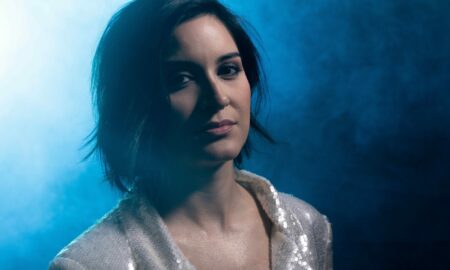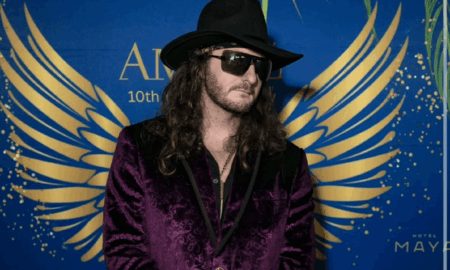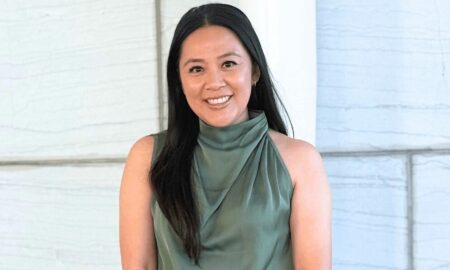

Today we’d like to introduce you to Ethan Pines.
So, before we jump into specific questions about the business, why don’t you give us some details about you and your story.
My photographic career began with my work as a writer. I studied English in college, got a masters in journalism, then worked as a freelance writer and copywriter on the East Coast. After about seven years, I developed severe arm and shoulder problems from stress and being on the computer all the time. In 1999 I moved back to L.A., where I grew up, and committed to finding something that would get me off the computer and out into the world. (Of course, now I’m on the computer all the time.)
I took a photography course at Santa Monica College out of random interest. I knew nothing about photography; had never set my camera to Manual, didn’t know what aperture meant. But I had long sought something that used both the creative and technical sides of my mind, and this was it. I took another course, realized I was in love and took most of the classes they offered over the next three years.
For two years after SMC, I assisted other photographers and developed my portfolio. My first break came upon meeting the art director of LA CityBeat, a terrific free weekly no longer around, at a friend’s party. I went in the next week to show him my book, and he started hiring me regularly for portraits, including covers. Those shoots paid absurdly little but provided access to great, vivid subjects. They also allowed complete creative freedom. They were essentially a form of post-grad boot camp.
Not long after that came, my second break: a photographer friend couldn’t do a shoot for Modern Luxury, which owns lifestyle magazines around the country, so she referred them to me. Though it was simply shooting a bottle in a wine shop — not what I usually do — I put some nice work into it, and they started hiring me every month to shoot portraits and lifestyle for multiple magazines. They pay wasn’t great, but it added up. Having a regular client made a huge difference to my financial stability, my ability to do more marketing, and my ability to invest in my business and gather new clients.
It also served as photo boot camp #2, with much more production value this time — I’d always used strobes, but I started experimenting with using a lot more of them. I approached every shoot as a portfolio shoot, i.e., not only would I get what they needed, but I would get something for my book, something catchy or quirky or surprising or arresting. The more you put into a shoot, the more you get out of it.
I signed with my first rep, committed to more frequent, polished marketing, and started doing more test shoots. I also started doing extensive home shoots for The New York Times and The Wall Street Journal, where I honed the way I light and shoot people in spaces, one of the things I’m known for.
All this started bringing in advertising and commercial work, which I love — it’s thrilling to have the resources, budget and creative teams to bring big ideas to life. There’s nothing like the collaboration before and during commercial shoots; together we’re all basically creating a one-act movie, and it’s magic when it all coalesces.
I’m now repped by Randy Cole, a veteran agent out of NYC. I shoot a mix of commercial and editorial work, plus testing, plus personal/fine-art work when I have the time or need that creative recharge.
Has it been a smooth road?
Hah — no, and I doubt you could find many photographers who would say yes.
The challenges are almost too many to list: Educating clients about licensing and usage. Helping them to understand why photography is expensive, what actually goes into a shoot. Running a business on your own, including marketing, admin, bookkeeping, invoicing, I.T., office supplies, maintenance, etc. Stopping others from using your work without paying. Testing and updating your portfolio. Keeping it fresh while enabling clients to know what to hire you for. Competing in an oversaturated field. Balancing work and life, since the to-do list is never done. Taking on a mortgage and large expenses when each year’s income might differ from the last. Saving for retirement.
That’s just a taste of it. I don’t think the road is ever purely smooth. If you take your eye off the ball, the marketplace will find someone new to hire. You always need to be testing, pushing your craft, showing new work. There are so many photographers now, if you compete on price, it’s just a race to the bottom; you need to compete by offering unique, compelling imagery and being easy to work with.
When I started, all the old-timers said, Good luck — it’s not what it used to be. And I would say the same thing to anyone starting out now because the craft and the business have changed dramatically in the 18 years since I joined the industry. That being said, I love my work, I’m grateful to be a practitioner of the craft, and if you have talent, dedication, and perseverance, you just might make it.
We’d love to hear more about what you do.
I shoot modern, crisp, lively work with high production value for commercial and editorial clients around the country. I’m known for bringing ideas and creativity to my shoots; for lighting complex setups; for directing to create humorous and relatable moments; and for imbuing my work with irreverence, absurdity and a bit of quirk.
I’ve been told that my work has a very L.A. look. It’s punchy and colorful — my team and I use props and wardrobe and set design to create unique, transcendent worlds — and I light to add depth and dimension to every element in the frame. I do a lot of planning before the large productions, including detailed lighting and staging diagrams, so that shoot days have room for fun and creativity.
Ranging from portraits to lifestyle to large conceptual setups, my photography is predominantly people-based, with the occasional animal thrown in. Beyond all this, I’m known for pushing my shoots’ ideas and creative content to the next level, when appropriate.
At this point, I’ve shot campaigns for Dolby, JamCity, Solarcity, the SEC, United Pharmaceuticals, Simply Asia Foods, Universal Studios, Casio, HomeAway, and other commercial clients. Forbes has also been a regular client for five years, including about 20 covers. When not out shooting, I work from my home in Topanga Canyon, where I live with my wife, our cat and a bunch of weeds.
How do you think the industry will change over the next decade?
Motion and dynamic content are becoming more important, whether that means video, time-lapse, interactive elements, or any other fresh take on imagery that we can come up with. Photographers are increasingly expected to offer motion as part of their arsenal.
Print seems to slowly be on its way out, which is especially unfortunate since I believe that’s still the most compelling way to view images. There are still plenty of magazines around, but many of them are not quite as thick and profitable as they once were. At the same time, the proliferation of photography and photographers has brought a massive increase in self-published books and magazines, many of them truly gorgeous and innovative.
As technology makes it easier over time for more people to enter the photographic field, I feel that creativity is the real key to success. There are plenty of people who can create an attractive image, whether or not they do it in-camera or in a post. What truly raises an artist above the herd is his or her ideas, concepts, vision, imagination.
Contact Info:
- Website: www.ethanpines.com
- Email: [email protected]
- Instagram: https://www.instagram.com/ethanpines/
- Facebook: https://www.facebook.com/ethan.pines
- Other: https://www.randycole.com/photographers/ethan-pines










Getting in touch: VoyageLA is built on recommendations from the community; it’s how we uncover hidden gems, so if you know someone who deserves recognition please let us know here.



















